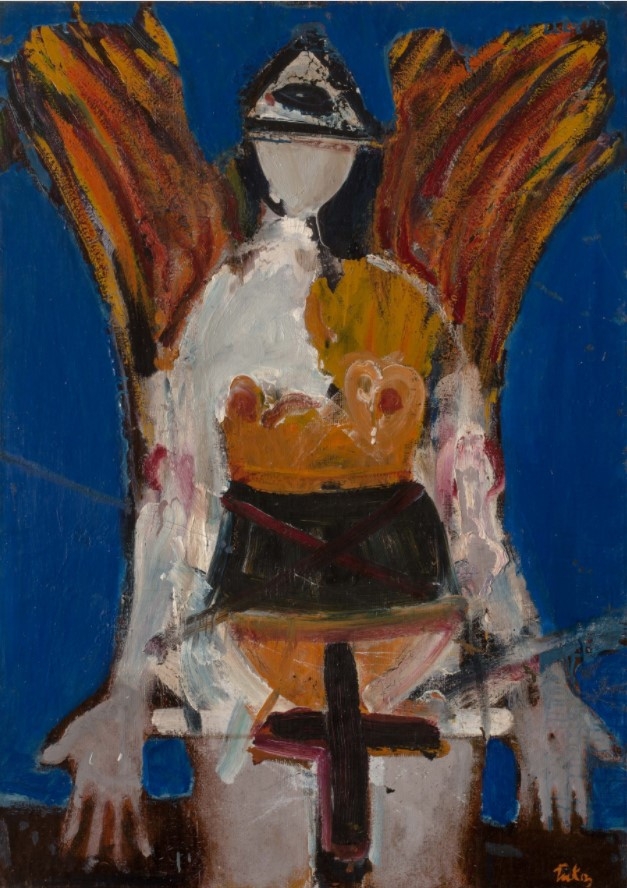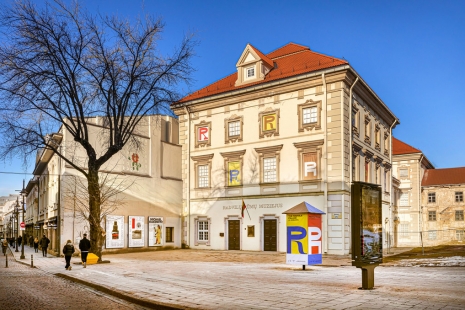Probably the most intensive and very productive period of work of the artist Vaidotas Žukas (b. 1956) happened to coincide with these tensions in public and cultural life, namely, 1975–1983. These chronological markers are conditional and mark the young artist’s strident creative stage, one that continues in other forms of disobedience to this day.
Žukas was banned from exhibiting his works in official spaces for a decade, however the artist continued to demonstratively bring his works before exhibition commissions, and would then carry them home again. Regardless of the systemic ignorance shown towards him, the painter continued to work: he created a great deal, and in a very different way. His early paintings stood out in the art context of the day, and are accompanied by testimonials to this day, such as : “no one painted like that back then”. The artist upheld his creative freedom by not participating in the public exhibitions cycle. His stance was uncompromising, and as his work did not obey the requirements of the day regarding form or content, it expressed the author’s authentic aspirations and reactions to the atmosphere at the time.
In this exhibition, his works are presented so as to highlight the major motif groups: the cycles of Angry Children and nude figures, religious and existential compositions, global political figures and Lithuanian personalities – artists, scientists, dissidents. Alongside his paintings, collages and drawings, his sketches are also on display, helping us to at least partly get a sense of the artist’s inspiration.
The stories behind Žukas’ works are multilayered. Quotes from early and modern Western art, literary references and elements of popular visual culture intertwine. A distinctive visual source for his works were scientific publications and periodicals. Fragments of text and illustrations were given analytical consideration and uniquely interpreted, often forming the basis for Žukas’ compositions. Even works that at first glace appear rather neutral – say, portraits or landscapes – political, social and cultural subtexts do emerge, which then fully explode in his works featuring political, religious and war-related content.
On account of the uncomfortable messages, unabashed irony, provocation, the raising of sharp questions, as well as the artist’s own individualistic, confrontational position in the Soviet era, Žukas’ work remained out of sight in the official art scene. Regardless of the limited scope for spread in the art sphere at that time, his works nonetheless found their audience: many of the artist’s pieces from this period later found their way into museums and private collections in Lithuania and abroad. Thus, this exhibition is a rare opportunity to see the core of Žukas’ early work in one place.
The exhibition is part of the Romas Kalanta commemoration programme.
Curator Justina Augustytė
Architects and designers: Juozapas Švelnys, Saulius Valius
Designer Loreta Uzdraitė
Organised by the Lithuanian National Museum of Art





